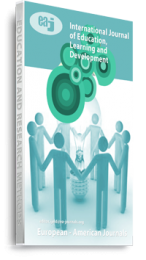There is a growing recognition of the many different ways that Information Communication Technology can contribute to, or transform, the activities, roles, and relationships experienced by teachers and in early childhood education settings. The objective of the study was to examine the integration of Information Communication Technology (ICT) in planning for instruction in early learning in Bungoma County, Kenya. The study was guided by Technological Pedagogical Content Knowledge Framework (TPACK) by Punya Mishra and Matthew J. Koehler’s. The study population included Early Childhood Development (ECD) teachers, education officers in charge of ECD in the county and public primary school headteachers. Simple random sampling was used to obtain 177 ECD teachers which is 10% of 1,768 ECD teachers from 884 public primary schools in Bungoma County. The study adopted a descriptive research design. With regard to ICT integration in instruction planning, ECD teachers in Bungoma County perceive that use of ICT is helpful in the pre-planning and post-planning of instruction and the use of ICT helps to make learning concepts more concrete. In addition, the teachers indicated that the use of ICT helps in the preparation of teaching records, such as a teaching plan and a work plan. Teachers, however, perceived that the use of ICT in instruction planning reduced the teacher-learner interaction of the classroom. Providing incentives for a smooth incorporation of technology into education involves students, school managers, curriculum coordinators, and parents to take an active role in assessing the value of curriculum inclusion in the classroom. The study recommends that the government improves the numbers of ICT devices in school to improve on the ratio of the ICT devices per pupil, facilitate ICT training for teachers and lastly, development of local content.
Keywords: Information Communication Technology, Instruction, Integration, Planning

